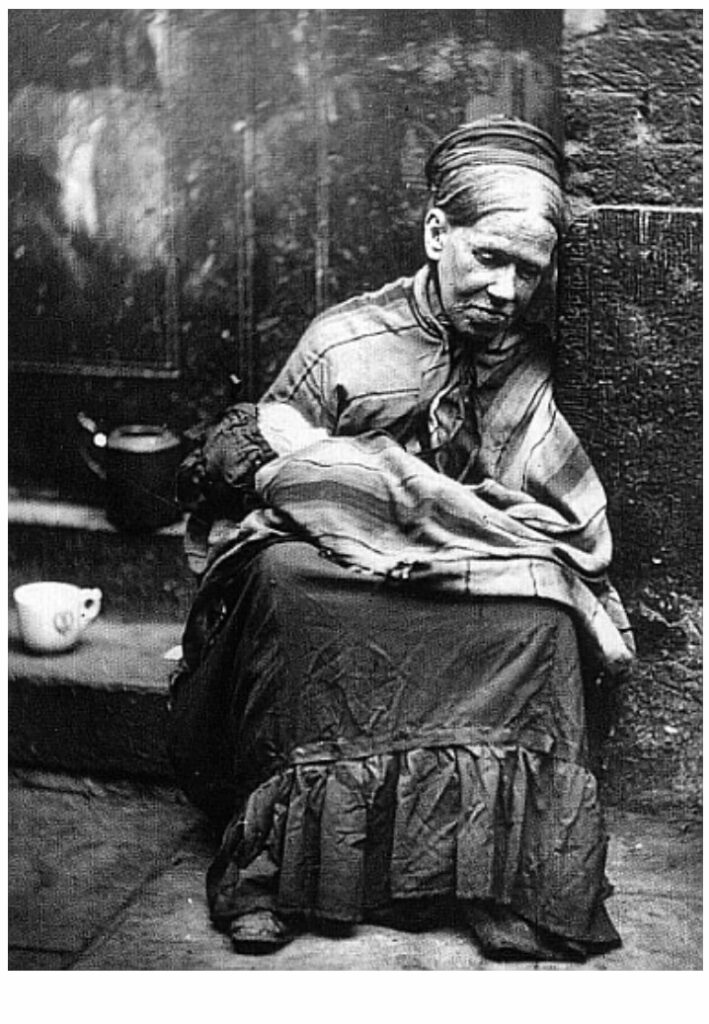How does an artist develop a new body of work? It often begins with a kernel of an idea. A spark.
Back in 2020, I was feeling disconnected from my community. As were many of us during the pandemic. I had this idea that one way to re-connect was to research something historical about my town. One place that had always piqued my curiosity was the former “Poor Farm.” What was it? Why did it exist? Who lived there?
Following this path, I learned that the Poor Farm was a home for the destitute. A place for people to work off their debts. The words and phrases used in town documents to describe these people struck a nerve.

This lead me to Google images of life in the 1800’s and I came upon a striking photo from Victorian England.

As I wandered further down the rabbit hole, I came across a photo that I later learned was taken by Lewis Hine (1874-1940). One young woman in this photo would become my muse and inspiration for my current body of work.
The more photos I discovered, the more I kept asking myself, “Who were these young women?” “What were their stories?” “What became of them?” “How can I honor their memory?”

This is a rather condensed version of how my new body of work came to life. In reality, there was quite a bit of back and forth, pursuing different ideas, writing thoughts down in my journal, researching, questioning myself, making art and circling back again. I read books, watched videos, visited museums and websites. It is slow work. Deep work.
Now, almost four years later, I continue to develop this body of work. Last year I settled on a name for the work: “We Will Be Sisters: Stories of Female Textile Mill Workers.” A selection of finished pieces will be on exhibit in November in the Hosmer Gallery at the Forbes Library. In future posts, I’ll share more about my process and creating specific pieces.